Everything you need to know about cooking oats, including the types of oats, how to cook oats, flavors to add, and nutrition information!
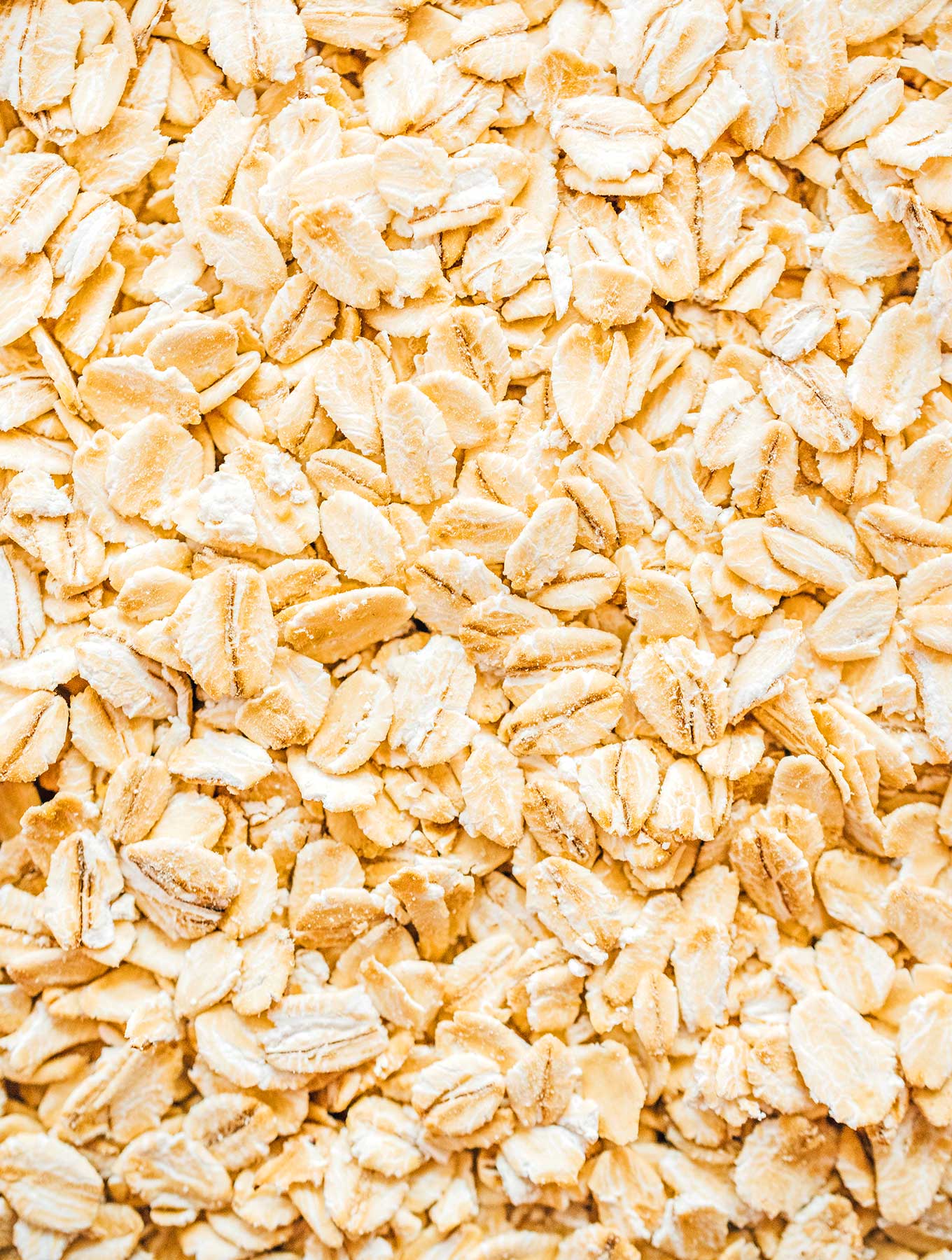
Growing up, oats always meant little brown packages of dinosaur egg instant oatmeal, but nowadays they’re a blank canvas.
Oats are the creamy breakfast of lazy mornings, the thickener to smoothies, the foundation to cookies.
So before we jump into the oat-filled recipes I’ve got ready for you this week, let’s walk through the basics of oatmeal!
- What Are Oats?
- Types Of Oats
- How To Cook Different Types Oats
- How To Store Oats
- Our Favorite Oat Recipes
- Rolled Oats Nutrition Information
- Are Oats Keto Friendly??
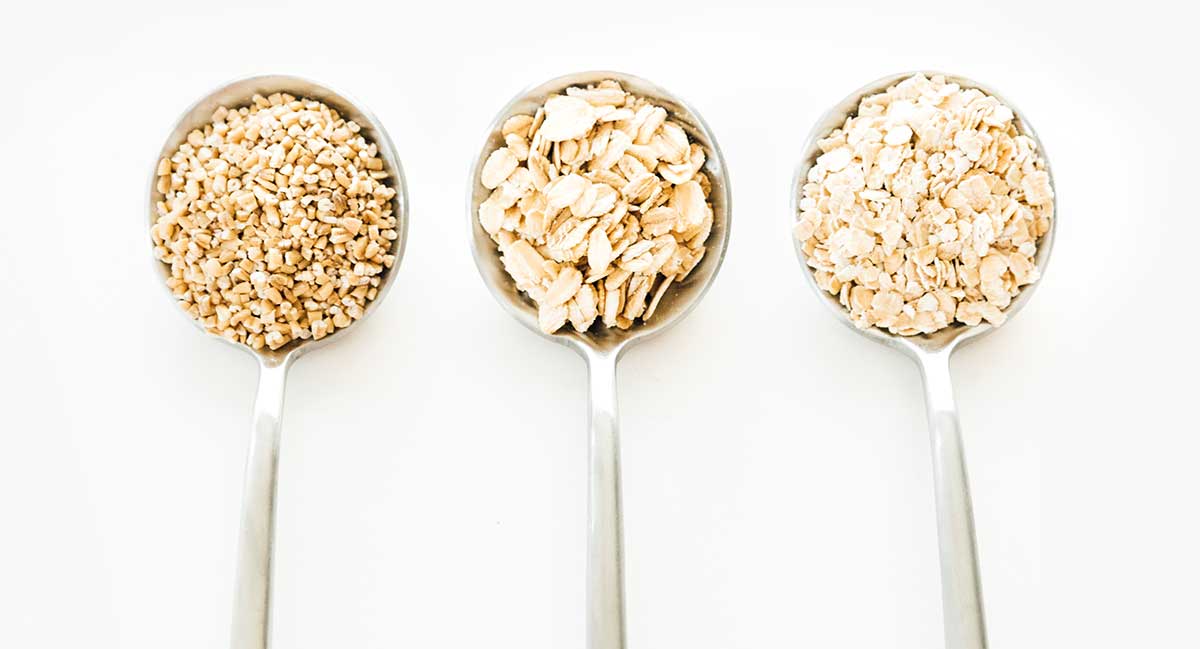
What Are Oats?
Oats begin their journey as groats, the seed of a cereal grain. They’re usually roasted to make them more shelf stable and to give them a toasty flavor, then processed in a number of ways.
Types Of Oats
Oats vary in how the groats are processed. Check out our comprehensive guide to types of oats here, but the four most common varieties are:
Steel-cut: Groats are cut up rather than rolled, giving them an almost rice-like appearance. Because the pieces are larger, they take the longest to cook and have a chewy texture.
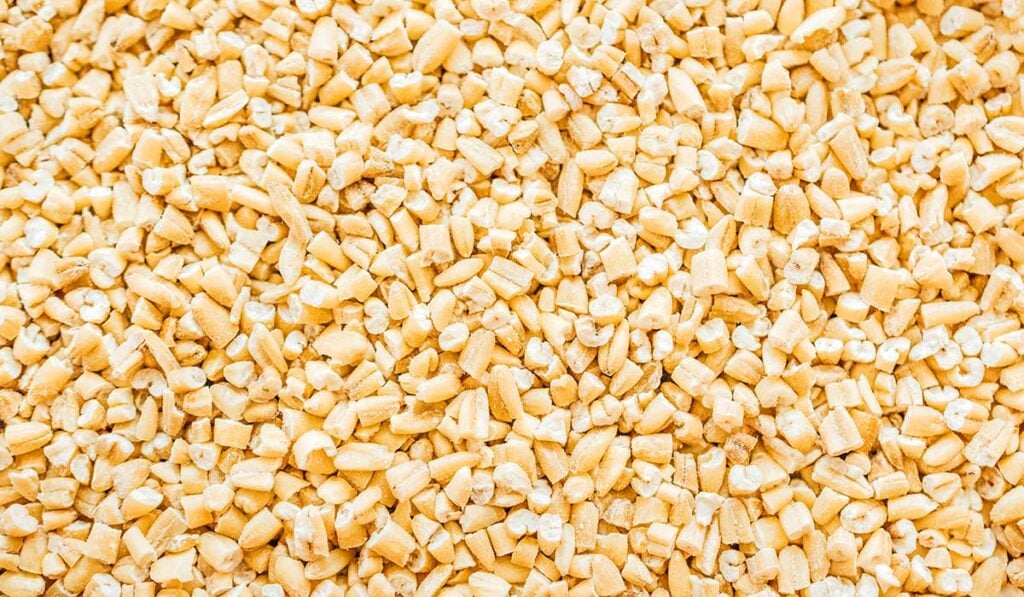
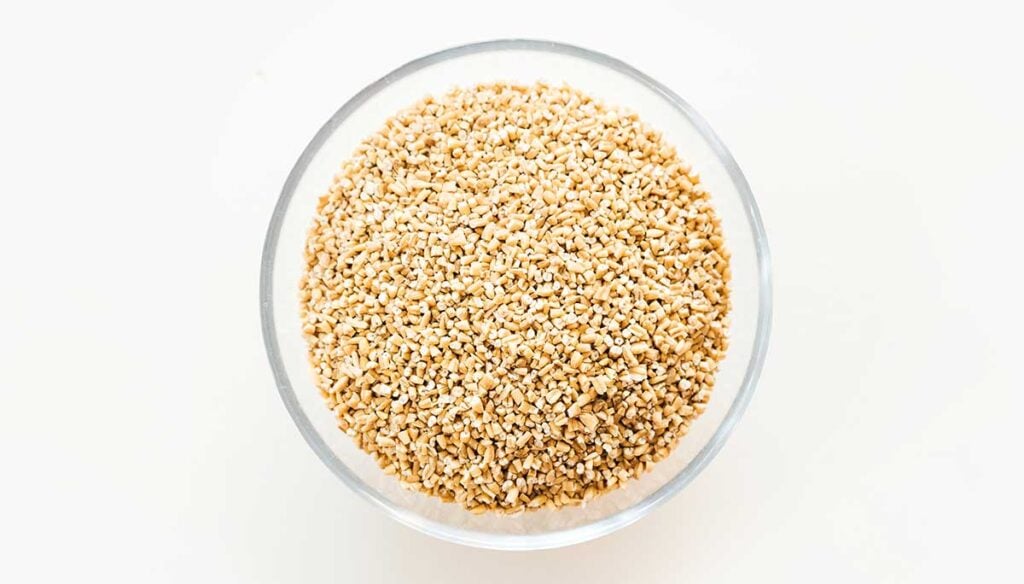
Rolled (or old fashioned): The groats are steamed to make them pliable then flattened to create disc-like oats. These cook faster than steel-cut and absorb more liquid.
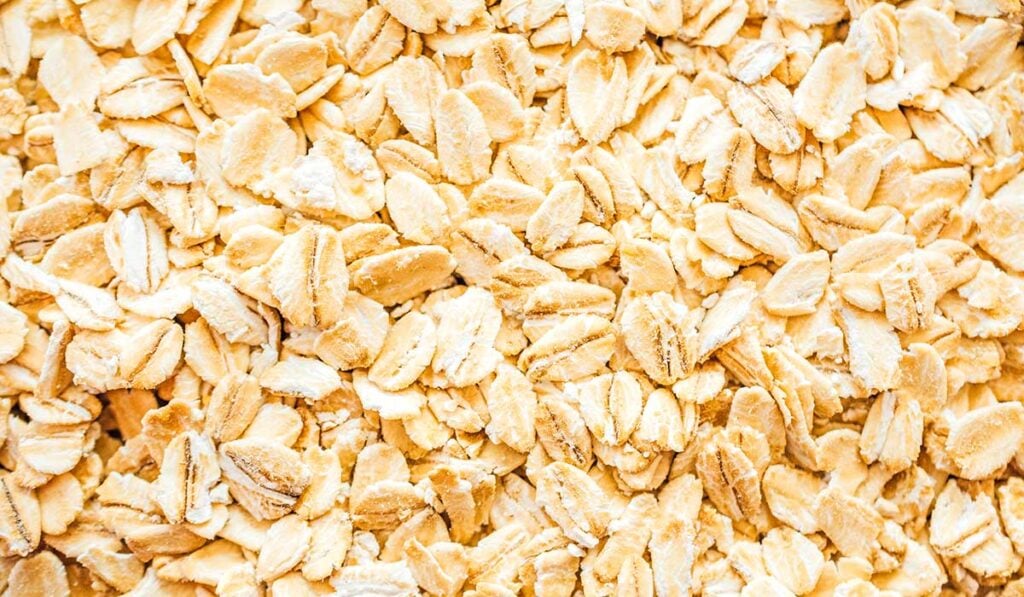
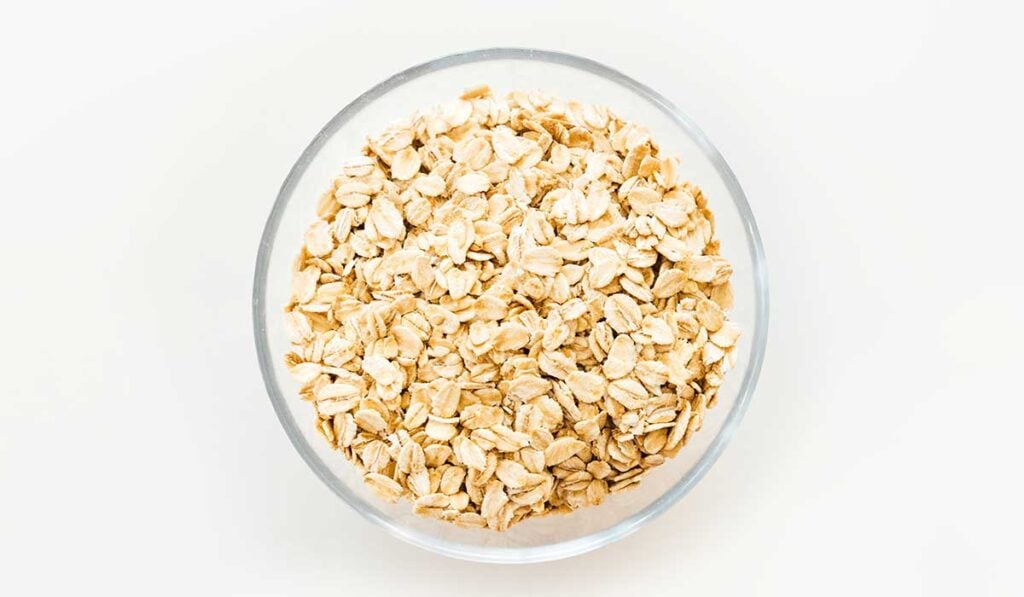
Instant: These are precooked and flattened even thinner than the rolled, making instant oats the quickest cooking variation. These don’t hold their shape well, so the result will be a bit mushier.
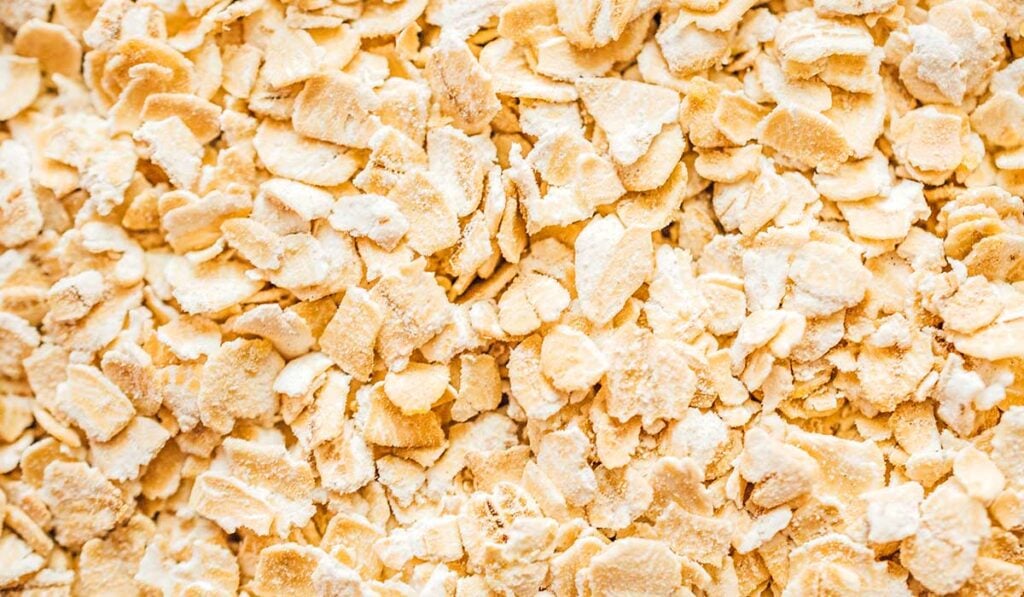
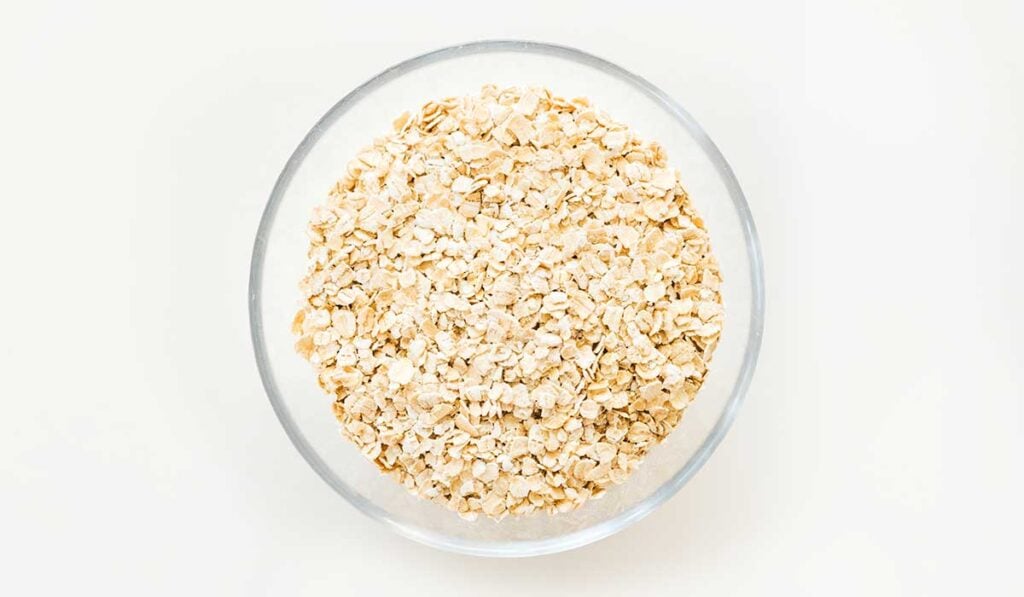
Oat flour: Groats are finely ground into a whole grain flour. This can be used in baking or for thickening soups and such.
And did you know that all four variations have the same nutritional values? They all start from the same groat, and are simply processed differently.
How To Cook Different Types Oats
Each variety of oatmeal requires slightly different cook times, with the less processed oats (steel-cut) needing more time than your finer variations (instant). Here are some handy tips for optimal oatmeal:
- Adding oats to cold water and bringing it to a boil will result in creamier oatmeal, while adding oatmeal to already boiling water will result in more textured oatmeal. Know what you’re going for and cook accordingly!
- Be sure to add a pinch of salt! And experiment with adding spices like nutmeg, cloves, and cinnamon while you’re at it.
- Try toasting the oats before boiling for an even toastier, nuttier flavor.
How To Cook Steel Cut Oats
Combine ¼ cup steel cut oats with 1½ cups water. Bring to a simmer, uncovered, and cook for 25 to 30 minutes, or until oats are tender and water is absorbed.
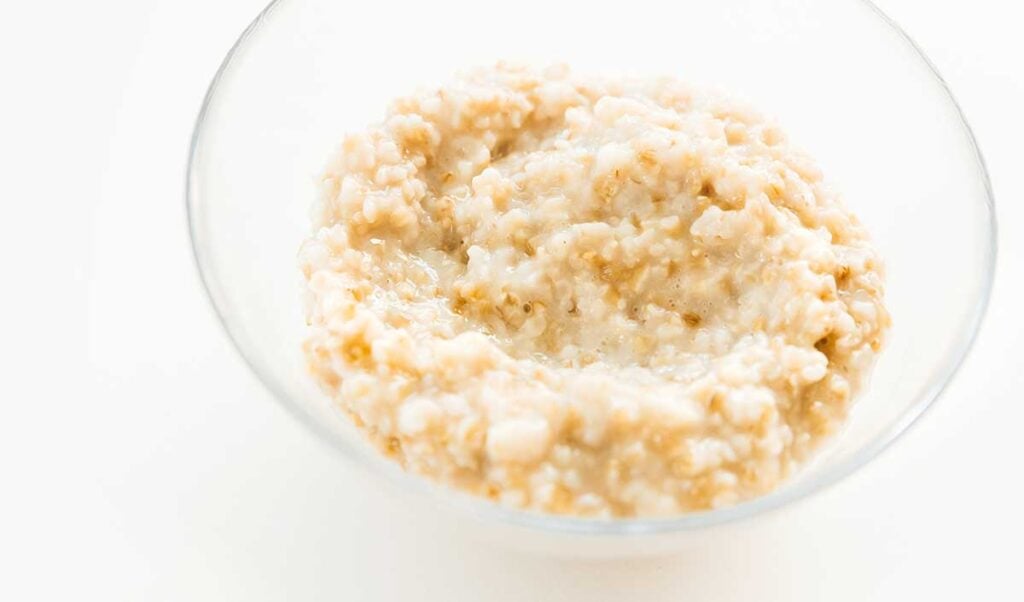
How To Cook Rolled Oats
Combine ½ cup rolled oats with 1 cups water. Bring to a simmer, uncovered, and cook for 5 minutes, or until oats are tender and water is absorbed. Alternatively, cook for 3 minutes in the microwave.
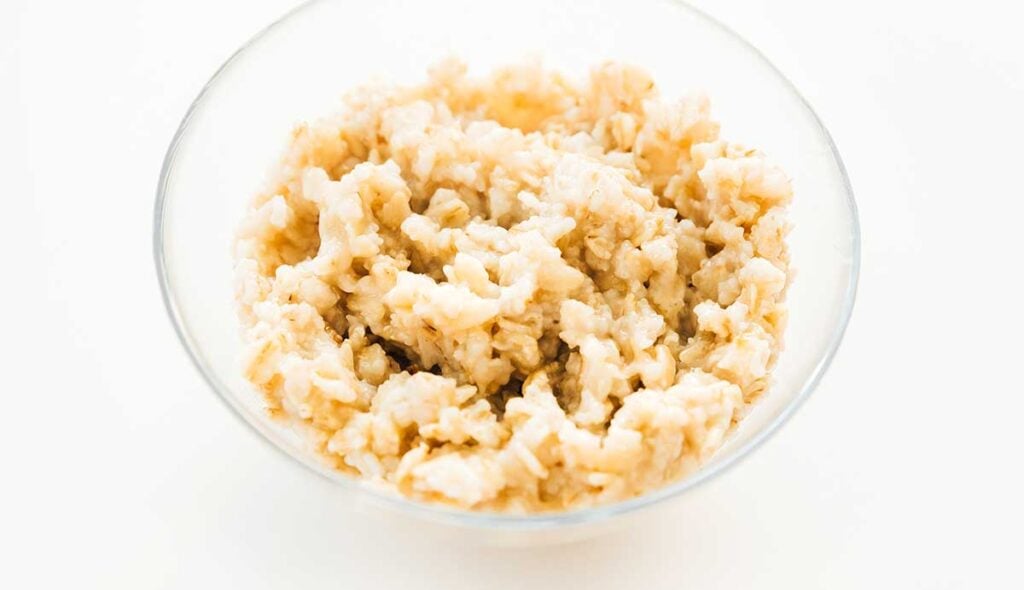
How To Cook Instant Oats
Combine ½ cup instant oats with 1 cups water. Bring to a simmer, uncovered, and cook for 1 to 2 minutes, or until oats are tender and water is absorbed. Alternatively, cook for 2 minutes in the microwave.
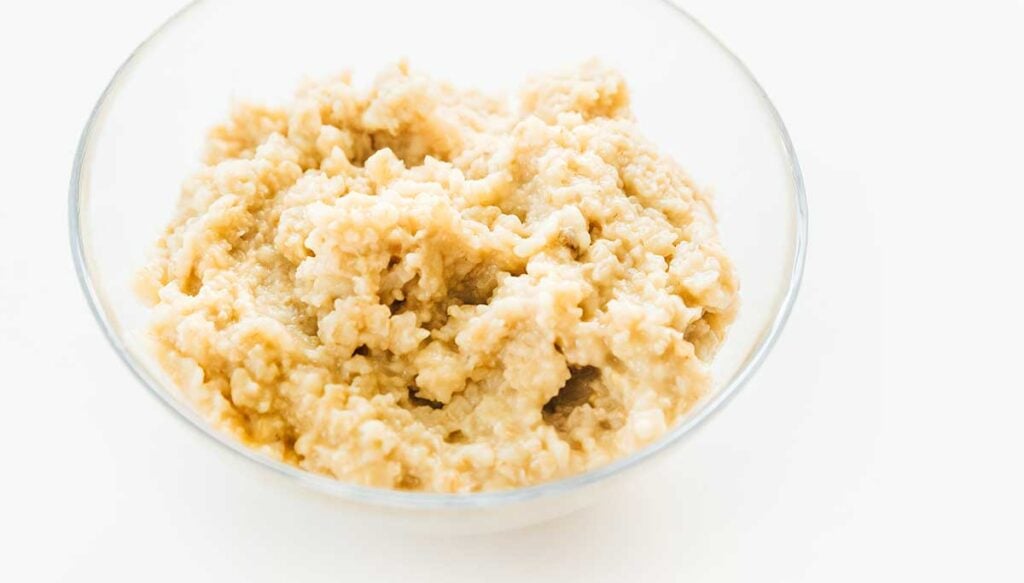
How To Store Oats
For long-lasting storage, keep your oats away from moisture, heat, and air. You can store them in an airtight container either in the pantry or freezer for about 1 year.
Our Favorite Oat Recipes
You can find all of our oat recipes here, but some of our favorites are:
- Sweet Potato and Oat Cookies
- Coffee and Oat Smoothie
- Apple Pie Overnight Oats
- Egg White Oatmeal
- The Basics of Overnight Oats (7 Flavors!)
- Strawberries and Cream Oatmeal
- Cranberry Orange Oatmeal
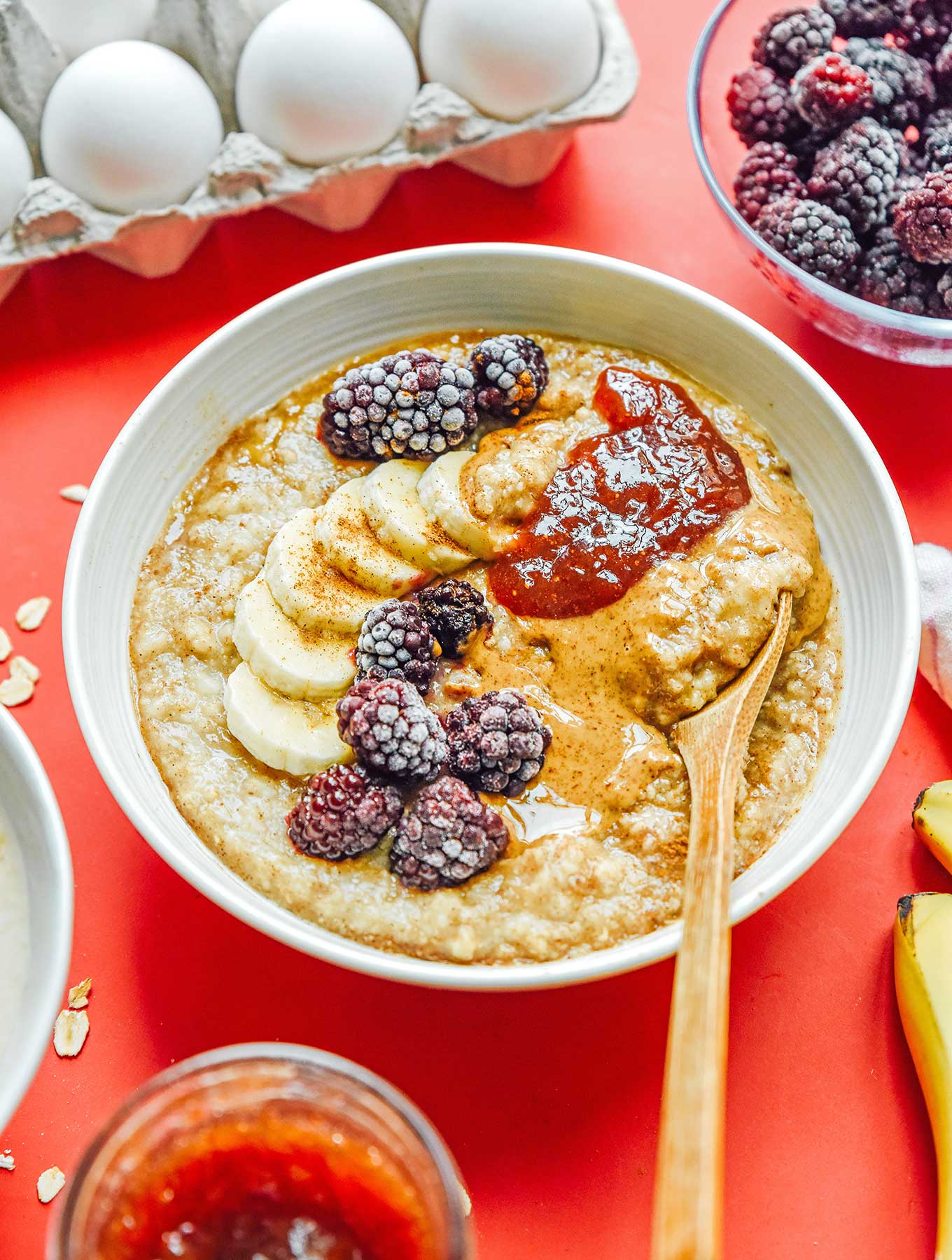
Rolled Oats Nutrition Information
Oats are a staple in the world of healthy grains. But are they as healthy as we think? In short, yes.
Since most of the processing techniques maintain the whole grain, they contain all parts of the oat kernel, including the bran, endosperm, and germ. This makes them rich in dietary fiber, vitamins, minerals, and antioxidants. They are a particularly good source of soluble fibers like beta-glucans, which are known for their cholesterol-lowering properties and positive impact on blood sugar regulation.
I’ll put on my nutritionist brain and break it down! (This information is per 1/2 cup (48g) of uncooked rolled oats)
Calories: 190
Oats are middle of the road in terms of calories – they’re not low calorie, but also not packed with calories.
Carbohydrates: 32 grams
Oats are not a low carb food, so they’re not suited for a keto diet. But with loads of complex carbs and fiber (see below), they’re a great addition to most other types of diets!
Fiber: 5 grams
Oats are an excellent source of fiber, and have 20% of your Daily Value (DV). This means that oats can can make you to feel full, helping you to eat less and lose weight.
Protein: 7 grams
Oats are a pretty good source of protein. Like many plant-based proteins, they don’t contain all the essential amino acids that we need, but are a great way to get protein into your diet in the morning!
Fat: 3.5 grams
While not completely fat-free, rolled oats are relatively low fat.
30% Daily Value of Thiamin (Vitamin B1)
A water-soluble vitamin that turns your food (carbohydrates) into fuel (glucose). People at risk for deficiency include those with Crohn’s Disease, alcoholics, and those undergoing kidney dialysis.
20% Daily Value of Zinc
They also contain zinc, the mineral important in strengthening your immune system, healing wounds, and maintaining your sense of taste and smell.
15% Daily Value of Iron
For a vegetarian diet, any plant source with this much iron is a huge win! Oats are high in iron, which is a major component of hemoglobin, the protein that makes up red blood cells and carry oxygen around the body.
Are Oats Keto Friendly??
Oats are not keto-friendly. While they are a high fiber food, the net carbs in oats (total carbs minus fiber) is still very high. According to the USDA, ½ cup of rolled oats (about an 1.5 ounces) contains 23g net carbs. Even a small serving of oats is difficult to fit into the restricted carb limits of a keto or other low-carb diet.
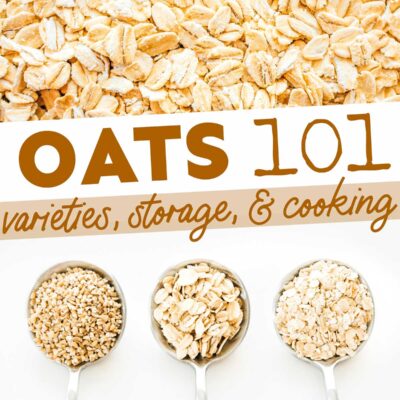
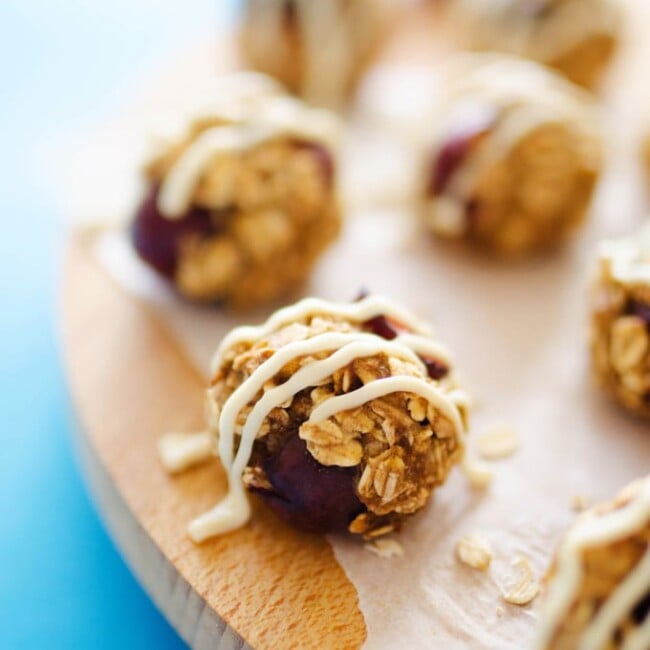
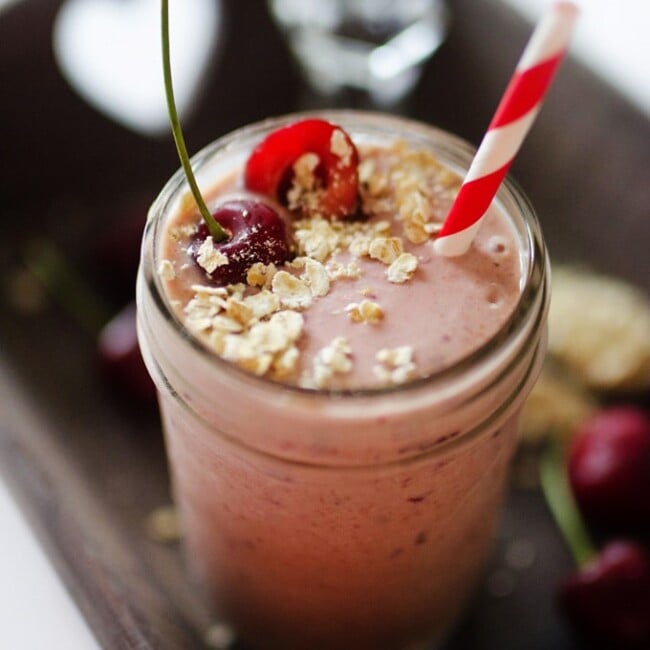
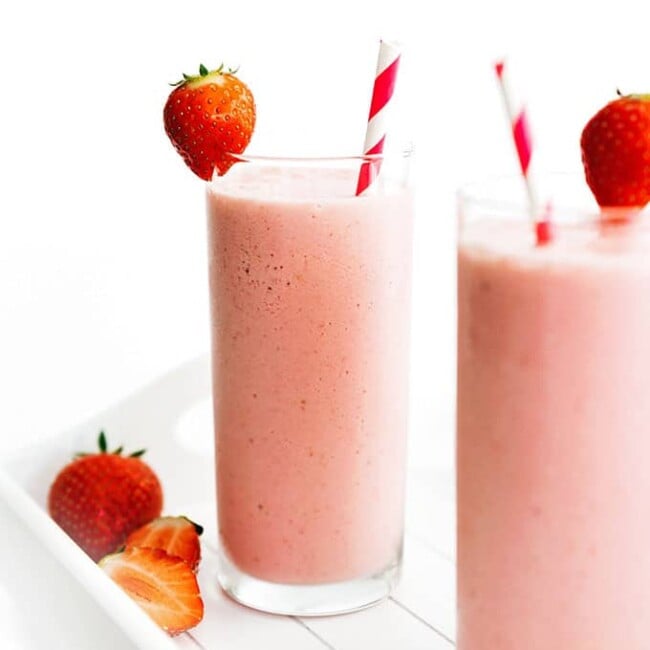
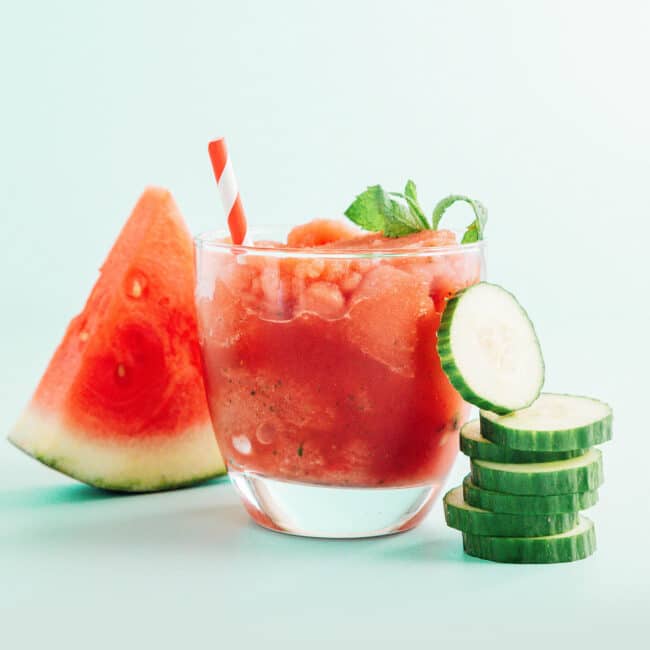
Keith says
I would like to start adding oats to my protein mix for weight gain. Should I heat them up first before adding them in, or just go raw. Also what variation of oats should use for my protein mix?
Sarah says
Hey, Keith! No need to cook them before adding them to a smoothie or protein mix. Just either grind them up in the blender first or add them to your protein mix and blend the whole thing until the oats have broken down evenly. Instant oats or oat flour will be best, as these are the smallest and easiest to breakdown. Hope this helps! 🙂
Stella @ Stellicious Life says
Hi Sarah! I just recently stumbled upon your blog and LOVE this “learn” feature! Oats are also one of my favourite ingredients, so looking forward to all the great oats-y recipes you have planned! 🙂
Sarah says
Hey, Stella, thanks so much! Oats are such an under appreciated ingredient, aren’t they? They’re destined for so much more than oatmeal! 🙂
Stella @ Stellicious Life says
Exactly! I love oats in crumbles/crisps, cookies and as oat flour as well. But always looking for more (and newer) ways to use it 🙂
Purnima says
V.informative. Will have to try the receipes
Kathleen says
Cooking oatmeal has always been a mystery to me, so I very much appreciate your posting this information on types of oats and how to cook them. Thank you!